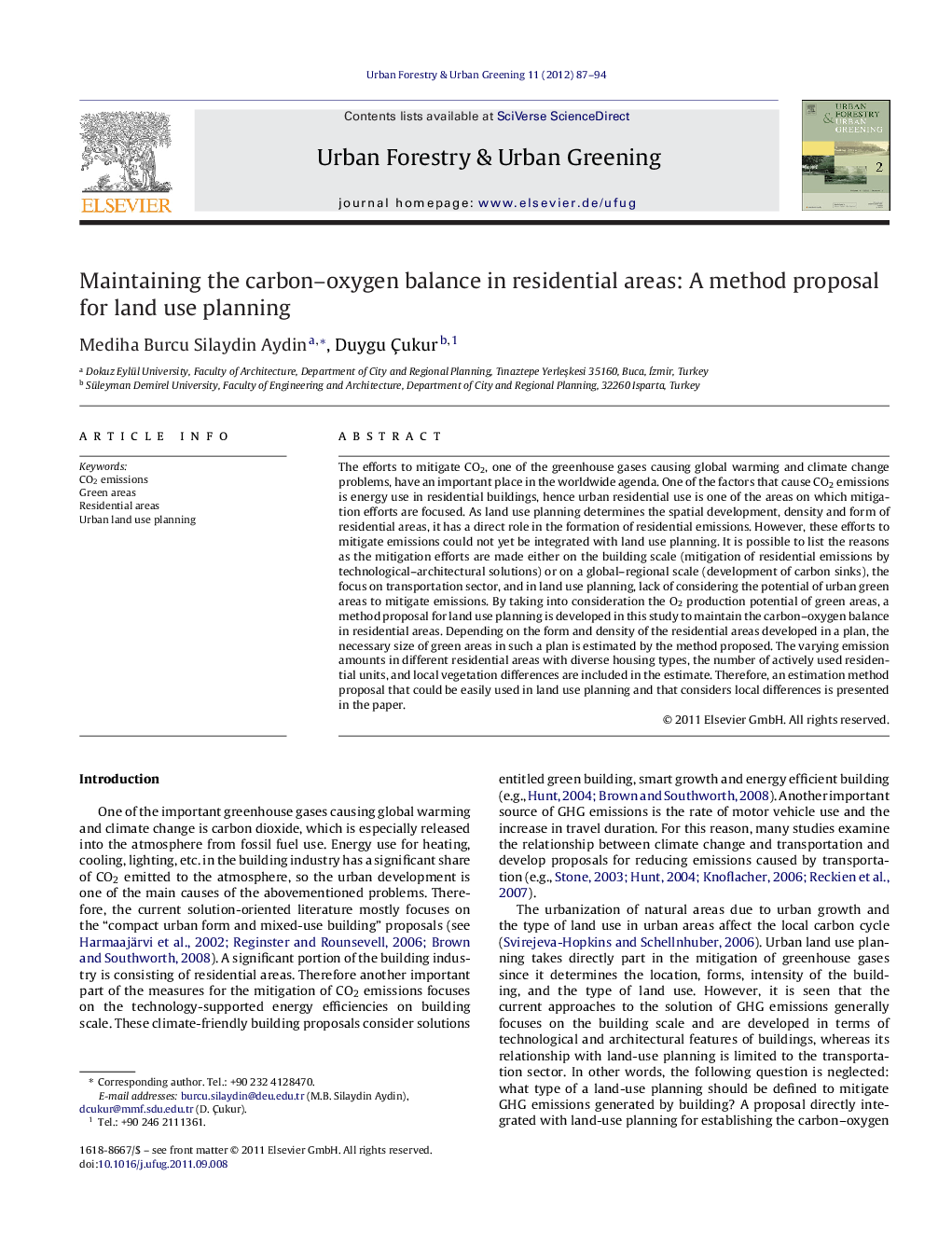| Article ID | Journal | Published Year | Pages | File Type |
|---|---|---|---|---|
| 94033 | Urban Forestry & Urban Greening | 2012 | 8 Pages |
The efforts to mitigate CO2, one of the greenhouse gases causing global warming and climate change problems, have an important place in the worldwide agenda. One of the factors that cause CO2 emissions is energy use in residential buildings, hence urban residential use is one of the areas on which mitigation efforts are focused. As land use planning determines the spatial development, density and form of residential areas, it has a direct role in the formation of residential emissions. However, these efforts to mitigate emissions could not yet be integrated with land use planning. It is possible to list the reasons as the mitigation efforts are made either on the building scale (mitigation of residential emissions by technological–architectural solutions) or on a global–regional scale (development of carbon sinks), the focus on transportation sector, and in land use planning, lack of considering the potential of urban green areas to mitigate emissions. By taking into consideration the O2 production potential of green areas, a method proposal for land use planning is developed in this study to maintain the carbon–oxygen balance in residential areas. Depending on the form and density of the residential areas developed in a plan, the necessary size of green areas in such a plan is estimated by the method proposed. The varying emission amounts in different residential areas with diverse housing types, the number of actively used residential units, and local vegetation differences are included in the estimate. Therefore, an estimation method proposal that could be easily used in land use planning and that considers local differences is presented in the paper.
